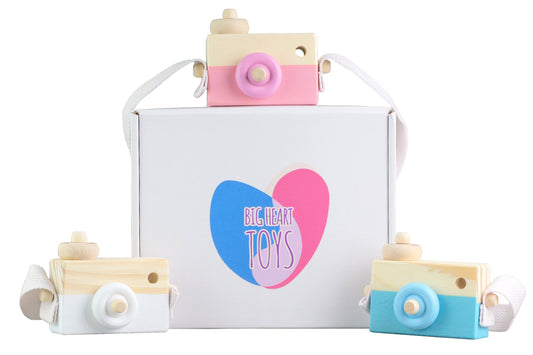As children may feel stress in their life navigating friendships, school, and family, here are a few tips on regulating overwhelming emotions. Some stress is natural and can be normal; however, our bodies typically alert us when we need a break or downtime.
Stress can become dangerous to the body if there’s too much for a long period of time. That’s when stress can lead to anxiety behaviors like difficulty focusing, feeling irritable, having trouble sleeping, and feeling restless.
Here are eight techniques that will help families regulate stress when it becomes overwhelming. In addition, let’s begin with ways to prevent undue stress from overcoming children's lives. Sometimes stress does happen, and that’s ok, but we can try our best to live in a calmer space whenever possible.
Routine
This is number one for a reason. A solid schedule helps everyone in the family, not just your children. When everyone knows what they are supposed to be doing and when they should be doing it, there are far fewer doubts or worries.
When first implementing a routine, you’ll need to help guide and remind your child during each transition of the day. Having the daily schedule up for display can help them understand what comes next in a new routine. Pictures added to the schedule help children who can't read yet or are just starting to read.
Sample Schedule:
7:00 am - Wake up
7:15 am - Eat breakfast
7:30 am - Get ready for school
8:00 am to 3:00 pm - School time
3:30 pm - Eat a snack
4:00 pm - Free play
5:00 pm - Homework
6:00 pm - Dinner
7:00 pm - Get ready for bedtime
8:00 pm - Bedtime
A consistent, drawn-out plan can help with transitions too. If your child is struggling to move from one task to the next, make a smaller schedule within the big picture.
Sample Morning Routine:
Make the bed when you first get up and then go to the bathroom. Wash your face and brush your teeth. Then go back to your room and pick out the clothes you want to wear for the day before breakfast.
Sample Bedtime Routine:
Take a bath and go to the bathroom, then put on your pajamas. Brush your teeth and hair before settling in bed to read a book or listen to a lullaby.
Have you noticed a pattern yet? Yes, consistency. Keep a schedule each day for a child, including on weekends. It’s very easy for kids to become emotionally rattled during the weekends as they lack the routine of school or chores.
No parents and caregivers are perfect. When life happens and schedules change, help your child prepare for this transition as much as you can.
Nutrition
As adults, we need specific things to do our jobs. A few necessities include our car, laptop, coffee, briefcase, or other work supplies.
Kids are no different! Nutrition is very important for children to flourish. Kids are growing every day and learning how to interact with peers, deal with big emotions, and obtain new skills like reading and writing.
With healthy and balanced meals, their little bodies are ready to do what it does best, be active and learn. With good nutrition, the body can handle stress when it inevitably comes along.
A simple way to make sure you have created a meal that gives your child what they need is by portioning a plate with vegetables, fruit, grains, and a protein. Generally, half the plate should contain fruits and vegetables. If possible, opt for leaner proteins and less processed food.
Drinks like water and milk (be it dairy or nut-based) are preferable to sugary drinks.
Whenever possible, encourage your family to try new foods. Sometimes, family members have food aversions, for example, to taste, texture, or smell. If that’s the case, simply work with your child with compassion, as everyone learns at their own pace.
Exercise
Exercise is wonderful for everyone! While kids aren’t likely heading to the gym, they have tons of opportunities to move and groove.
Physical movement encourages our bodies to produce endorphins and dopamine. According to the Greater Good Center Science Center at Berkeley, over time, this leads to more dopamine and more dopamine receptors. Basically, our brains become better at feeling happier.
Child-Friendly Exercises:
-
Dancing
-
Group or individual sports
-
Jumping
-
Riding bikes
-
Nature walks
Sleep
No one functions well without enough sleep. When your child is grouchy and sleep-deprived, everything is harder, including keeping stress at a minimum. Unwanted mishaps may occur(socially or academically) when children are sleepy, and those situations could translate into stress and anxiety.
Sleep can be hard to come by for many reasons; for one, there is more stress and worry for a child than under normal circumstances. If this is the case, organize a better bedtime routine with extra love and even add in a weighted blanket for your child to sleep better. White noise machines and blackout curtains are wonderful for creating a sleepy atmosphere as well.
Are you sleepy just talking about sleep? Try taking a nap. Nap times are crucial for babies and toddlers, but as kids age, they might resist napping. With so much fun stuff going on, who can blame them?
Caregivers of pre-school-aged children who resist naps may find this tip helpful; schedule some quiet time. If kids claim that “they aren’t tired” or “napping is for babies,” yet they’re yawning and pouting, perhaps suggest they just sit quietly in their room with the lights off. You might find your tiny tot fast asleep soon enough.
Even after school is in session, caregivers can remind older children that a brief nap is still an option if they have had a difficult night or an exhausting day.
Meditation
Meditation can help when stress exceeds a comfortable level. Guided meditations are best for children; all they need to do is quiet down and follow along.
Mantra meditation is repeated daily and can help lower stressful emotions. Your child can confidently say, “I can handle what the day brings.” This line reminds them that despite all the changes and turns of the day, they can handle it. If the child still feels overwhelmed, they can reach out to an adult for help.
Deep Breathing
Breathing techniques give the brain a signal to calm down. If the brain has already triggered stress and chaos, bringing the body back to centered breaths can close those neural pathways and even out to a better mindset.
Dragon Breath
Who doesn’t want to face challenges like a dragon? Breathe in through the mouth, then exhale out through the nose, just like a dragon would!
Next, take a breath in through the nose and then push out with a “haaaaah” sound to breathe out the “fire.” Add arms that flap for wings for extra fun and body movement!
Smelling the Flowers
Are Dragons scary? Try Smelling the Flowers instead with this imaginative idea!
Pick a pretend flower and have your child hold it in their hand and bring it to their face like they’re going to smell it. Then they have to breathe in deep through the nose and then breathe out through the mouth gently and slowly so that the flower petals don’t blow away!
You can also change up the flower breathing technique to a hard exhale of breath. With this, we blow all the flower petals off the flower, as we would with making a wish on a dandelion.
Social Connections
A good friend group can make a big difference in a child's life. They will feel connected to and understood by their peer group, which is a notable part of a childhood and school experience.
If your child is feeling stressed, they have a positive outreach and comfort when they turn to their friends and ease their minds through play.
Playing is vital to the well-being of a child, and you probably noticed we made sure to schedule at least an hour of playtime into the weekday sample schedule. With all the structure growing minds need, children feel they have an outlet, which allows free time during play.
Children can plan and envision how their school day will go, which is another positive way to keep their stress levels down. However, social situations for both children and adults can be complex and overwhelming, making the day hard to get through. Sometimes making friends can seem more anxiety-provoking than anxiety-relieving.
In that case, caregivers can guide little ones in the art of social connection. Age-appropriate instructional e-learning books like Luna Makes a Friend or Leo Starts a Conversationare friendly and compassionate ways to model social relationships. Other tactics like role play with toys and stuffed animals can provide a basis for how to interact with others.
Ask for Help
When we feel supported, our overall well-being is boosted. As humans, connections and community are a part of how we survive and get ahead in the big (sometimes crazy) world we live in. Tell your child they can always reach out for help.
Your child will find comfort in friends and you as they navigate through life. This will help them, but sometimes a child might need more. This is when it’s important to talk to a professional such as a school counselor or therapist if you are worried that your child’s stress levels are becoming unmanageable.
Decompress and Reassess
The bad news is that stress tends to be unavoidable sometimes. The good news is that we can always work on our emotional regulation techniques. It’s not something we do once; it requires constant practice, much like a sport or hobby.
Take a deep breath, let it out, and know you’re doing the best you can with what you have. Tomorrow is just another day to try something new and practice your skills!
Sources:
School Stress Management: Tips and Strategies for Students of All Ages | Wake Forest University
5 tips to manage stress | Mayo Clinic Health System
Five Surprising Ways Exercise Changes Your Brain | Greater Good Science Center





